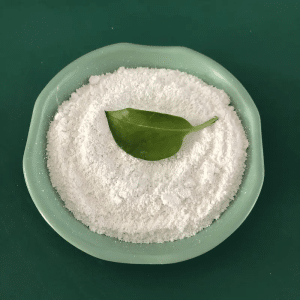In the intricate world of biochemistry, L-histidine stands out as a versatile amino acid with diverse roles spanning from protein synthesis to neurotransmission. Its unique chemical structure and biological functions make it indispensable for numerous physiological processes within the human body. This article delves deep into L-histidine’s biochemical foundations, physiological roles, and potential therapeutic implications, shedding light on its importance in health and disease.
Biochemical Foundations
Chemically represented as α-amino-1H-imidazole-4-propanoic acid, L-histidine is one of the 20 standard amino acids organisms use for protein synthesis. Its structure includes an imidazole side chain, distinguishing it from other amino acids and imparting unique chemical properties.
Synthesis and Occurrence
Unlike some amino acids that can be synthesized de novo in the human body, L-histidine is considered semi-essential, meaning its synthesis may not always meet physiological demands. In adults, L-histidine biosynthesis occurs primarily in the liver through enzymatic reactions involving the precursors phosphoribosyl pyrophosphate (PRPP) and ATP. However, infants and individuals with certain metabolic disorders may require dietary intake of L-histidine to meet their needs.
Natural dietary sources of L-histidine include meat, poultry, fish, dairy products, nuts, seeds, and whole grains. These sources provide the amino acids for protein synthesis and various metabolic processes essential for the growth and maintenance of bodily functions.
Physiological Roles
Protein Synthesis and Structure
As a constituent of proteins, L-histidine plays a crucial role in maintaining the structural integrity and function of enzymes, receptors, and transport proteins. Its presence within active sites of enzymes often facilitates catalytic activity by participating in acid-base catalysis and stabilizing reaction intermediates. Furthermore, L-histidine residues in proteins contribute to their three-dimensional structure, influencing their specificity and interaction with ligands.
Buffering Agent and pH Regulation
One of L-histidine’s most notable biochemical functions is its role as a buffering agent in biological systems. The imidazole side chain of L-histidine can accept and donate protons, making it an effective buffer within physiological pH ranges. This property is critical for maintaining the acid-base balance in tissues and fluids, ensuring optimal enzymatic activity and cellular function conditions.
Neurotransmitter and Neurological Functions
In the central nervous system, L-histidine serves as a precursor for histamine, a neurotransmitter involved in regulating sleep-wake cycles, appetite, cognition, and inflammatory responses. Histamine synthesis occurs through the L-histidine decarboxylation catalyzed by the histidine decarboxylase enzyme. Histamine receptors are widely distributed throughout the body, indicating their broad influence on physiological processes beyond the nervous system.
L-histidine receptors, such as the histamine H1 and H2 receptors, mediate various cellular responses, including smooth muscle contraction, gastric acid secretion, and immune modulation. These receptor-mediated effects highlight L-histidine’s role in maintaining homeostasis and responding to external stimuli.
Metal Ion Coordination and Catalysis
The imidazole side chain of L-histidine uniquely coordinates metal ions such as iron, zinc, and copper within metalloproteins. This coordination facilitates electron transfer reactions, enzymatic catalysis, and structural stabilization of metalloenzymes essential for metabolic processes and redox reactions.
Therapeutic Applications
Given its diverse biochemical functions and physiological roles, L-histidine has garnered attention for potential therapeutic applications across several medical conditions.
Anti-inflammatory and Immune Modulation
Histamine, derived from L-histidine, plays a pivotal role in inflammatory responses and immune modulation. Histamine release from mast cells and basophils contributes to allergic reactions and inflammatory disorders. Antihistamine medications, which block histamine receptors, are commonly used to alleviate symptoms of allergies and inflammation.
Furthermore, histamine receptors and histidine metabolites may be targets for developing novel therapies for autoimmune diseases, where immune dysregulation contributes to chronic inflammation and tissue damage.
Antioxidant and Neuroprotective Effects
L-histidine exhibits antioxidant properties through its involvement in metal ion chelation and free radical scavenging. This antioxidative capacity helps mitigate oxidative stress-induced damage to cells and tissues, potentially offering neuroprotective benefits in neurodegenerative disorders such as Alzheimer’s disease and Parkinson’s disease.
Preclinical studies suggest that L-histidine supplementation or modulation of histamine receptors may protect neurons from oxidative damage, reduce neuroinflammation, and enhance cognitive function. However, clinical trials are necessary to validate these findings and establish therapeutic efficacy in human populations.
Gastrointestinal Health and Disorders
Histamine receptors in the gastrointestinal tract are critical in regulating gastric acid secretion, mucosal integrity, and gut motility. Dysregulation of histamine signaling has been implicated in conditions such as gastroesophageal reflux disease (GERD), peptic ulcers, and irritable bowel syndrome (IBS).
Modulating histamine receptors with specific agonists or antagonists may offer therapeutic benefits in managing symptoms associated with gastrointestinal disorders, including acid reflux, abdominal pain, and dyspepsia. However, the complex interactions between histamine, L-histidine metabolism, and gut microbiota warrant further investigation to optimize therapeutic strategies.
Conclusion
L-histidine exemplifies the intricate relationship between structure and function in biochemistry, embodying versatility across biochemical pathways, physiological systems, and potential therapeutic applications. From its role in protein synthesis and enzymatic catalysis to its influence on neurotransmission and immune modulation, L-histidine underscores the complexity of amino acids in maintaining health and addressing disease.
Ongoing research continues to unravel L-histidine’s molecular mechanisms and therapeutic potential, offering promising avenues for developing novel treatments for various medical conditions. As our understanding deepens, L-histidine may emerge as a critical player in personalized medicine, tailored interventions, and holistic approaches to health and well-being.
Ultimately, L-histidine’s significance extends far beyond its biochemical properties, highlighting its essential contributions to the intricate tapestry of human biology and its potential to impact the future of medical science and clinical practice.

